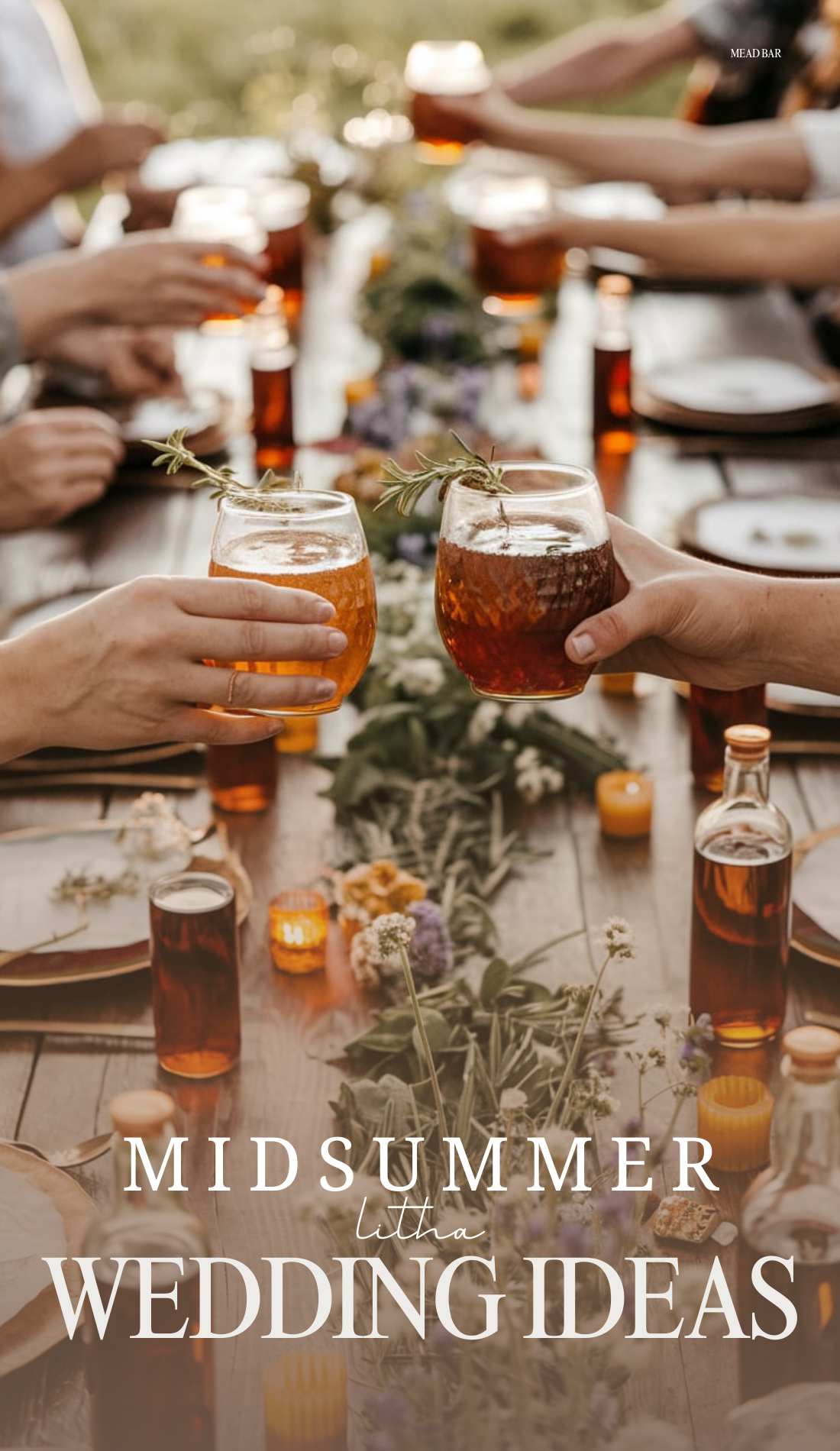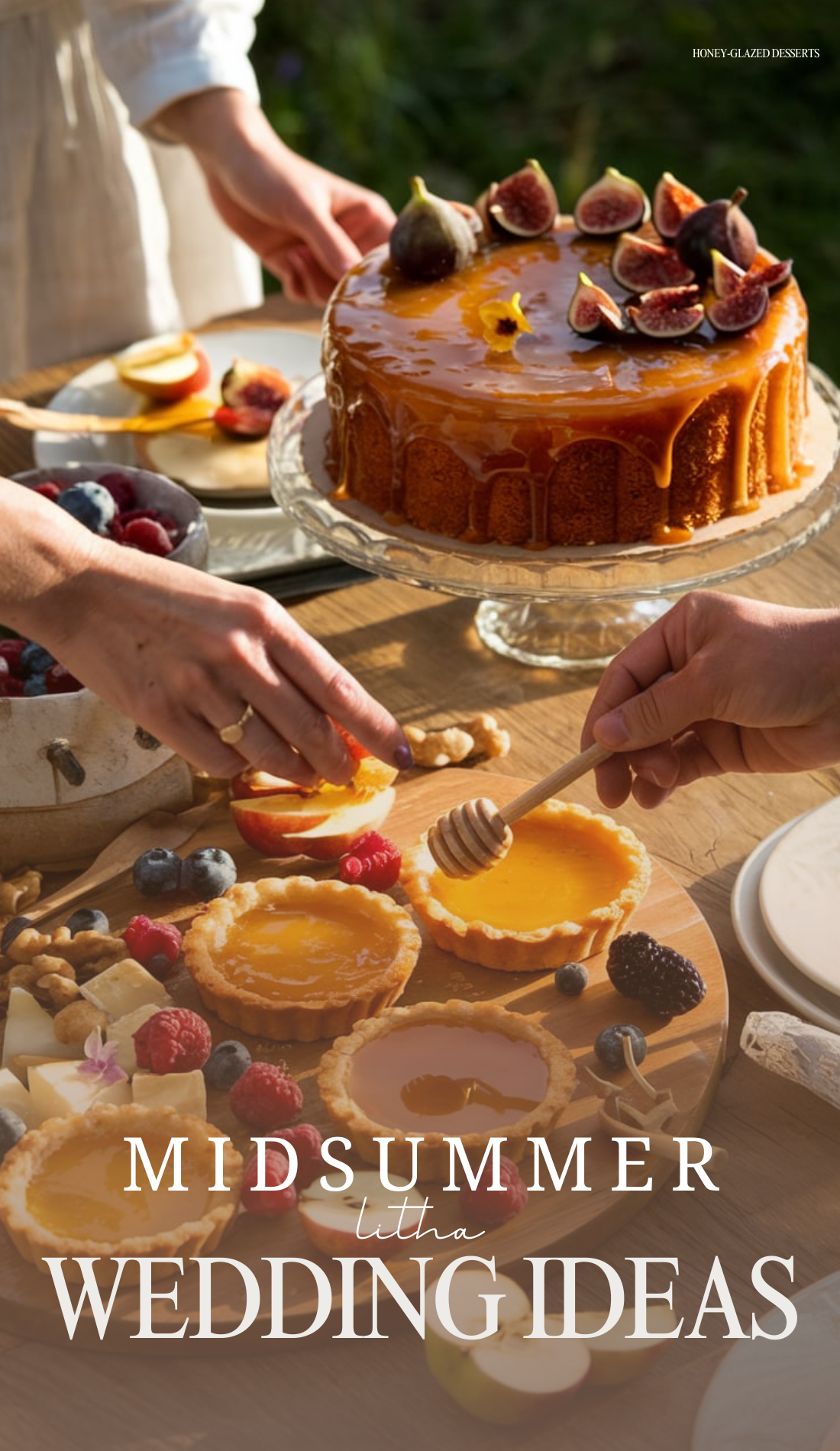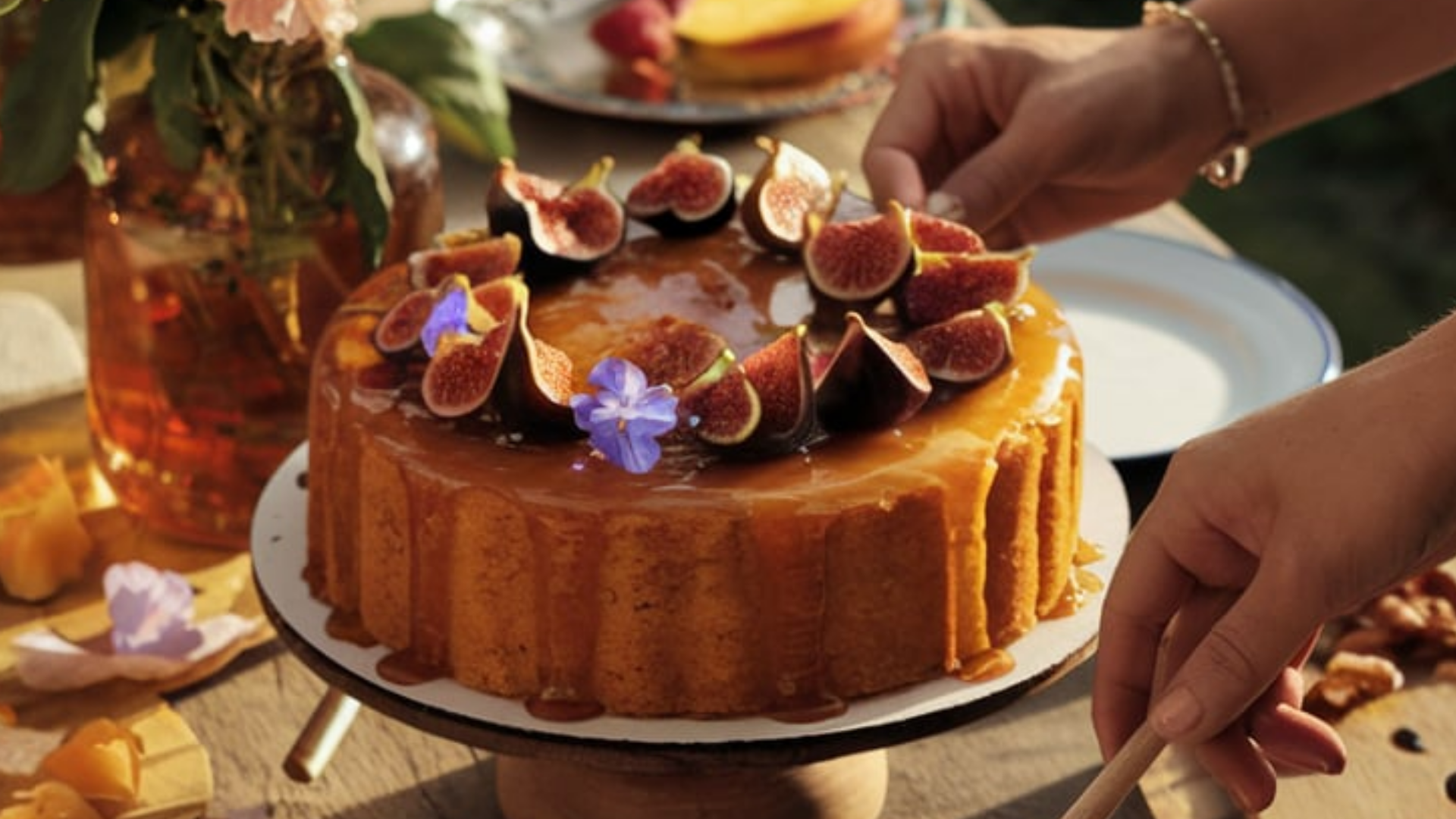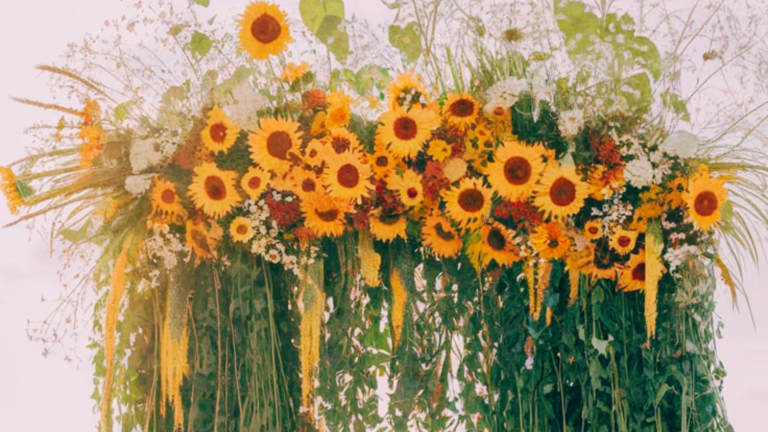5 Seasonal Food & Drink Ideas for a Litha Wedding (Midsummer Celebration for Pagans)
Please note that posts on this site may contain affiliate links
Litha’s bounty invites a feast that honors the sun’s warmth and the Earth’s generosity. In Pagan tradition, sharing food is a sacred act—a way to connect with the land, the season, and your community. These ideas focus on fresh, local ingredients and symbolic flavors, blending practicality with magical intention for a menu that feels both festive and meaningful.

1. Mead Bar
Why It’s Meaningful: Mead, an ancient honey-based drink, is deeply tied to Pagan celebrations and symbolizes fertility, sweetness, and community bonds. Honey itself is sacred to bees (associated with deities like Brigid) and represents the fruits of hard work.
How to Do It: Source local mead or brew your own (many shops offer beginner kits). Serve in rustic goblets or wooden cups, and add seasonal twists like elderflower or rosemary sprigs. Set up a small sign explaining mead’s history—guests will love the storytelling element!

2. Sun Tea Station
Why It’s Meaningful: Brewing tea in sunlight harnesses Litha’s solar energy, creating a drink infused with the sun’s vitality. Mint (for prosperity) and chamomile (for peace) are classic Midsummer herbs.
How to Do It: Place glass jars of water with tea bags or loose herbs in direct sunlight for 4–6 hours. Add ice and citrus slices for refreshment. Label each jar with its magical purpose (e.g., “Solar Chamomile: For a Joyful Marriage”).

3. Fire-Roasted Feast
Why It’s Meaningful: Cooking over flames ties your meal to Litha’s fire rituals, symbolizing transformation and passion. Grilled foods also honor the Horned God, a deity often linked to wilderness and harvest.
How to Do It: Opt for a BBQ-style buffet with seasonal veggies (zucchini, corn, peppers), marinated meats, or plant-based skewers. For a Pagan touch, have the chef bless the grill with a sprinkle of salt or herbs before cooking.

4. Honey-Glazed Desserts
Why It’s Meaningful: Honey is a Litha staple, representing abundance and the sweetness of life. It’s often used in offerings to sun deities like Apollo or Áine.
How to Do It: Drizzle local honey over cakes, tarts, or a cheese board. For a hands-on ritual, have guests dip apple slices into honey while sharing wishes for your marriage.

5. Berry-Infused Cocktails
Why It’s Meaningful: Berries ripen at Midsummer, embodying the season’s peak. Their vibrant colors (red for passion, purple for spirituality) add symbolic flair.
How to Do It: Muddle blackberries, strawberries, or raspberries into cocktails or mocktails. Serve in mason jars with herb garnishes (basil for harmony, thyme for courage). Name drinks after Litha themes, like “Sunset Sangria” or “Solstice Smash.”





